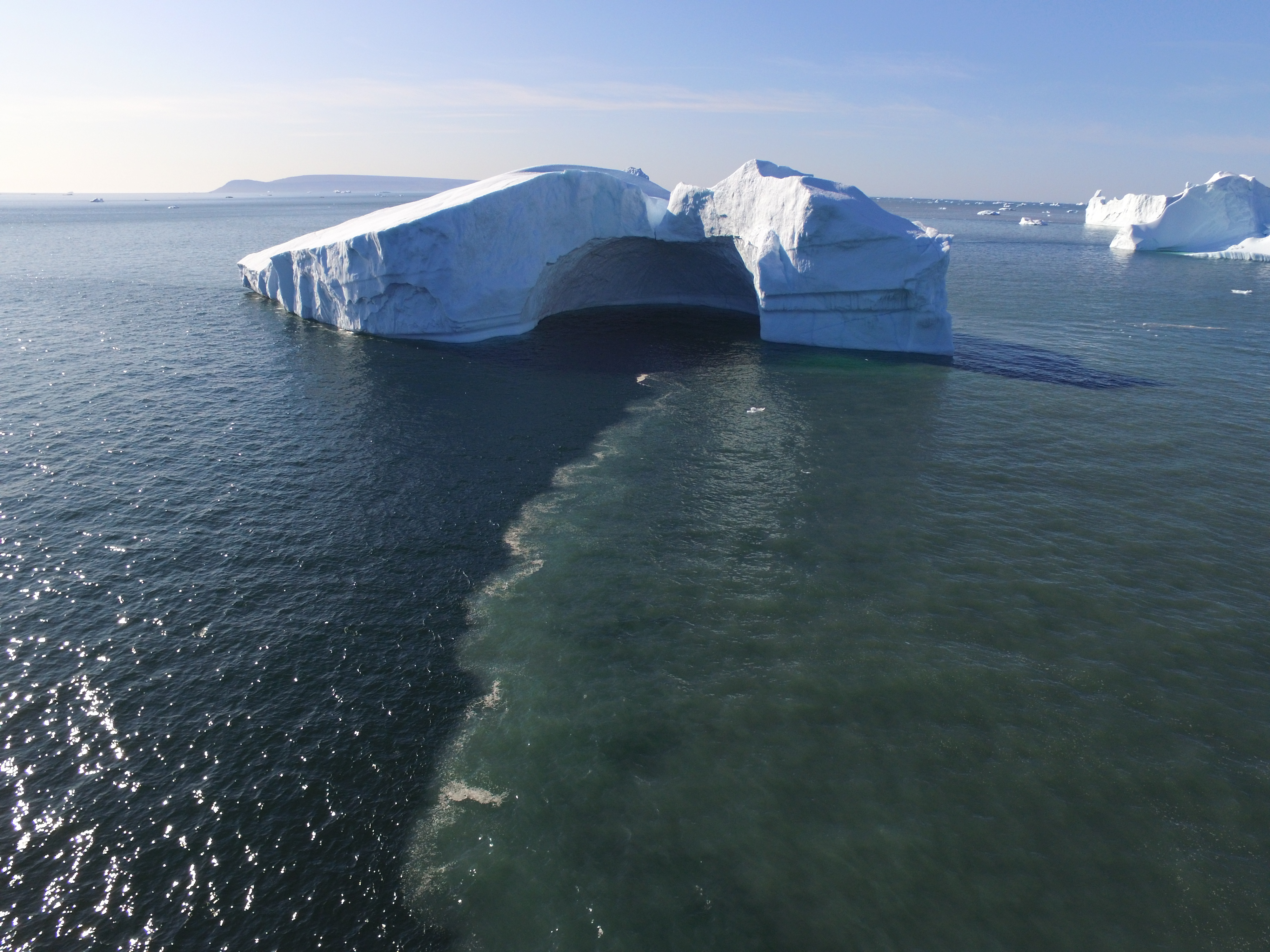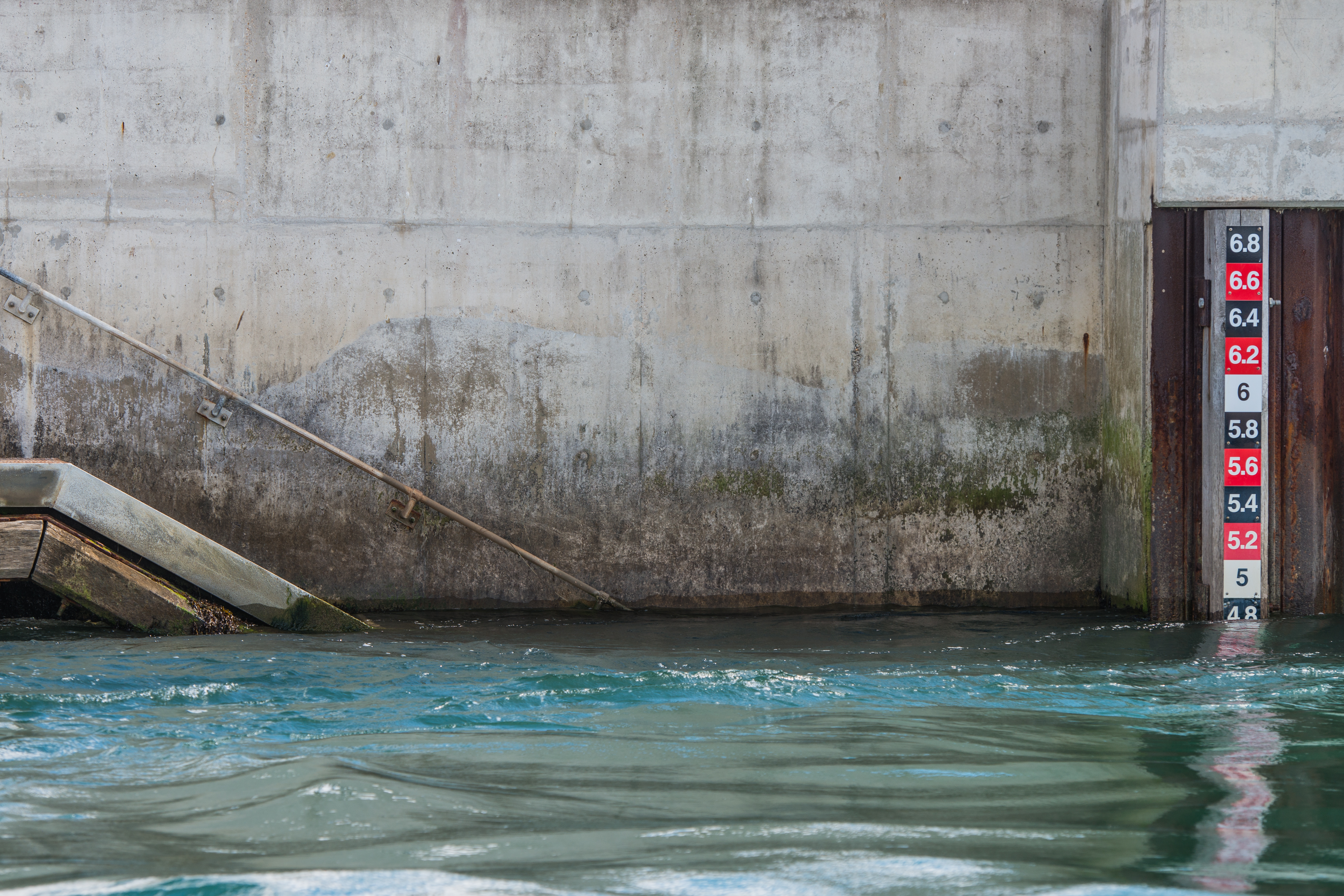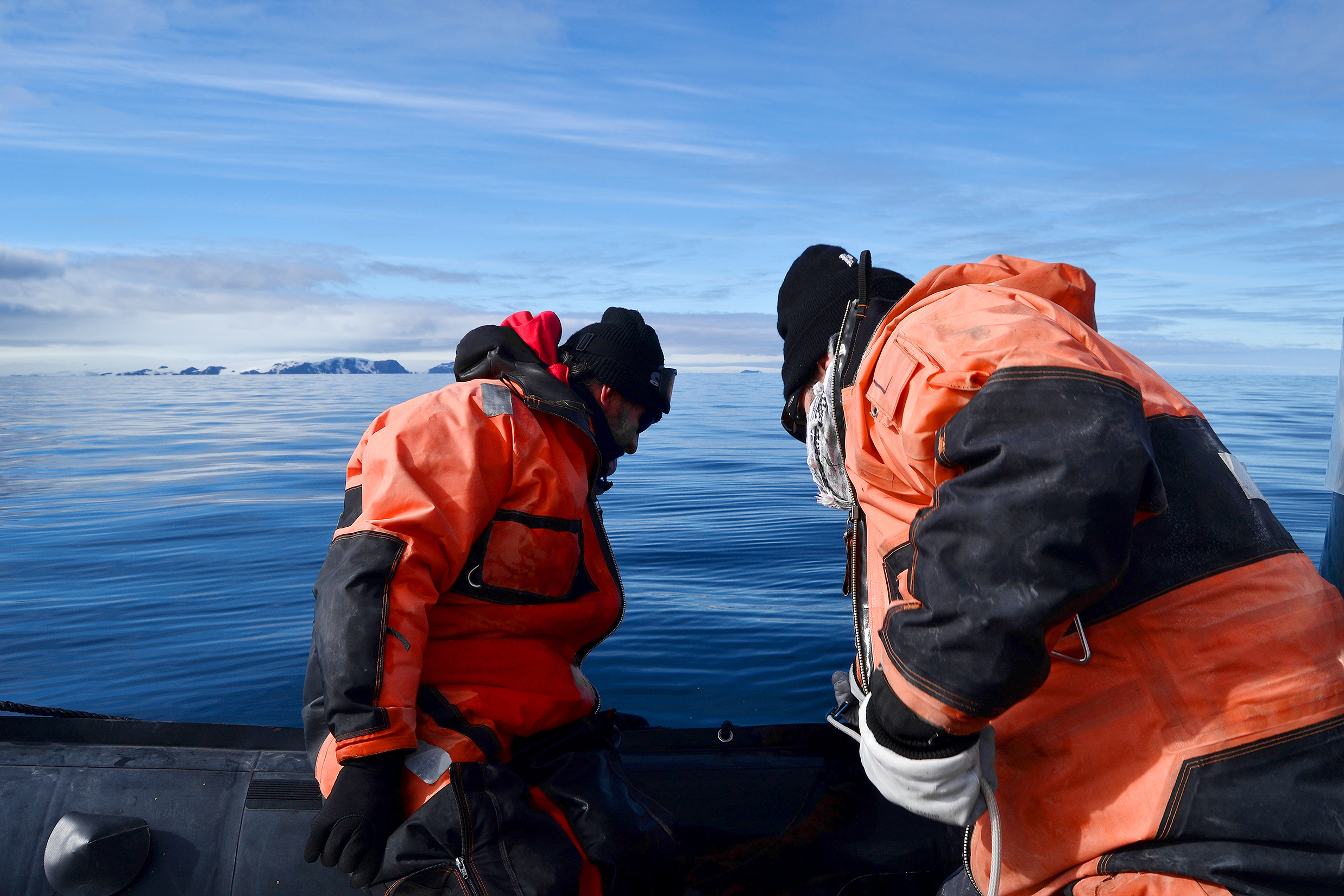Martin Siegert
Beneath the polar ice sheets
Martin Siegert, Deputy Vice-Chancellor at the University of Exeter and an antarctic glaciologist, examines the changes in the Antarctic.Key Points
- • Greenland and Antarctica have a 3,000- and 4,000-metre thick ice sheet, respectively, and underneath each one hides a very complex landscape. Both the ice sheets are now experiencing significant amounts of mass loss.
- • Most of the 20 centimetres of sea level rise that we’ve seen since 1850 is due to the thermal expansion of the ocean and the subsequent melting of valley glaciers all around the world.
- • Future sea level change is likely to be dominated by melting of the polar ice sheets. On its own, East Antarctica has enough ice to raise sea level by approximately 57 metres. A tenth of the planet’s population live close to the edge of the ocean.
- • The increase in carbon dioxide and other greenhouse gases into the atmosphere has a warming effect. If we don’t reduce emissions to zero in 30 years’ time, the ice sheets will start to melt even more rapidly than they are now.
- • We have to use ice sheet models to understand how Antarctica is likely to change in the future but we have no measurements as Antarctica has the last few parts of land surface of our planet that have not been measured. It's an imperative job to do.
Measuring polar ice sheets
The polar ice sheets are changing, which is a very concerning issue. As a glaciologist, I study how the Antarctic ice sheet flows and what’s underneath the ice. I predominantly use geophysics – my preferred geophysical technique is radar. The reason I use radar is because radio waves travel straight through cold ice, but they bounce off the bottom of the ice sheet so we can measure the two-way travel time of the radio wave; that is, we know the velocity of the radio wave in ice, so we can measure the ice thickness. If we know the ice thickness, we can measure the topography underneath the ice. Greenland and Antarctica have a 3,000- and 4,000-metre thick ice sheet, respectively, and underneath each one hides a very complex landscape.
Antarctica’s ice sheet is divided into the West Antarctic ice sheet and the East Antarctic ice sheet. The East Antarctic ice sheet is by far the biggest of the two, and most of it is resting on land above the level of the sea. Underneath, there are amazing mountains, valleys and landscapes. The last mountain range to ever be discovered was the Gamburtsev subglacial mountains in the middle of the East Antarctic continent. West Antarctica is a different situation. It’s still a continent, but it lies below the sea level. Unusually, the ice sheet that covers it is also grounded below sea level, reaching over two kilometres below sea level in some parts.
Melting Ice sheets
From a glaciological perspective, West Antarctica is a cause of great concern as it seems to be in a potentially unstable situation. If there is melting at the edge of the ice sheet, the grounding line – which separates floating ice from grounded ice – starts to migrate backwards into deeper territory. And as it does so, the ice sheet melts even further and a runaway feedback process kicks in. In short, if the West Antarctica ice sheet starts to melt at the edges, it will very possibly become unstable and disintegrate, causing the sea level to rise by about three and a half metres. Similarly, in East Antarctica, the parts below the level of the ocean are more prone to melting, and although most of the ice sheet is above sea level, it doesn’t have to lose an enormous amount to have a massive effect on global sea level. On its own, East Antarctica has enough ice to raise sea level by approximately 57 metres. Therefore, with a nearly imperceptible amount of ice melting from the Eastern side, we’d see a considerable rise in the sea level.

Photo by Daniel Carlson
Greenland is an immense ice sheet, with fast flowing ice streams that come out from the edges that carve out very deep topographic troughs, which make the ice sheets be in contact with the ocean. If the ocean gets warmer, the amount of melting in East Antarctica, West Antarctica and Greenland will increase. In addition, it’s so warm there in the summertime that it also gets surface melting. In fact, Greenland has a double whammy of increased warmth from the ocean and increased atmospheric warmth.
Monitoring the loss
Both the ice sheets in Greenland and Antarctica are now experiencing significant amounts of mass loss. In fact, six times more mass is being lost from those ice sheets compared with 1990. Since 1990, we’ve had a very accurate determination of the state of health of those ice sheets because of the satellite records that have been around this time. We don’t have to go too far back in time to notice that there are parts of Antarctica that have changed considerably in the last few hundred and few thousand years. As stated above, West Antarctica is where most of those changes are starting to occur. Historically, we know it’s susceptible to change, and we know that it is changing right now because of the satellite record. Our computer models of how ice flows tell us that this is a very vulnerable part of the ice sheet. The whole of Antarctica, especially in a future global warming scenario, might not be able to sustain itself because of mass loss processes. The ocean around Antarctica is warming, the ocean around Greenland is warming. These are ice sheets in a state of peril.
What can we do to protect the polar regions?
Most of these regions are very difficult to access, so it’s very difficult to see any direct action in the polar regions that could make a y difference. We have to understand that the polar regions are changing because of our activity. The increase in carbon dioxide and other greenhouse gases into the atmosphere has a warming effect. The atmosphere is warming the ocean and we’re seeing the effects of that warming in the polar regions and most notably, of course, with the large polar ice sheets. Therefore, the most important thing that we can do to stop changes in the Arctic and Antarctic is to stop emitting carbon dioxide, and we need to do that very rapidly. The problem is the level of CO2 that we are emitting is going up every year, and we have to reduce our emissions to zero, effectively, within about 30 years’ time if we are to keep temperatures to about 1.5 degrees above what they were before the Industrial Revolution. That’s about the best we can do, because we’re already locked in. We’re already one degree warmer than we were in 1850, and there’s not much we can do about that. We’re somewhat locked into another half a degree, and there’s not much we can do about that either. According to atmospheric scientists, if we don’t reduce emissions to zero in 30 years’ time, the ice sheets in Greenland and Antarctica will start to melt even more rapidly than they are now, with huge consequences for sea level globally.
The danger of sea levels rising
A tenth of the planet’s population – about 680 million people – live close to the edge of the ocean. There are major ports and cities – New York, London, Shanghai and many others – that have enormous amounts of infrastructure very close to the level of the ocean. If the ocean rises, those ports and cities are in danger. Now, one might argue that a few centimetres of sea level is not going to make much difference and, in fact, the sea level has already gone up by 20 centimetres since 1850. The problem is that’s just the start. There’s a lot more to come: if we increase greenhouse gases and global warming continues, the sea level could go up by metres in the future. In the Ice Age, 20,000 years ago, there was so much ice on the planet that the oceans were much lower. The water was taken from the oceans and it was dumped on land. With the increase in carbon dioxide in the atmosphere that followed the Ice Age, the levels of the ocean went up by 120 metres. Therefore, it’s entirely possible that when you warm the planet because of carbon dioxide increasing in the atmosphere, the ice sheets melt and the sea level rises. For the 10,000 years when the ice sheets were melting, sea level went up by a rate of 1.2 metres per century. However, it wasn’t consistent. There were times when the warming started to accelerate and, as a result, the ice sheets melted more quickly. During these periods, known as meltwater pulses, the sea level shot up . During the Meltwater Pulse 1A, 14,000 years ago, the sea level went up four to seven metres in a single century. So, again, it tells us that when you warm the planet quickly, the ice sheets can respond quickly, too.
At what rate is sea level rising?

Photo by Mark Anthony Ray
In 1900, the level of the ocean was going up about 1.8 millimetres per year because of the onset of carbon dioxide and global warming after the industrial revolution. By the middle of the 20th century, it was about 2.2 millimetres per year. Currently, it’s about 3.2 millimetres per year. The rate of change is accelerating, too. The reason for that is due to a number of things. Firstly, as the ocean gets warm, it starts to expand. Consequently, the sea level goes up and the glaciers all around the world start to melt. Strangely, if all 300,000 glaciers that exist on the planet – apart from Greenland and Antarctica – were to melt, the sea level would go up by 50 centimetres. However, if Antarctica and Greenland’s ice sheets melt, sea level would go up by over 60 metres, making them by far the largest store of ice on our planet. So, while most of the 20 centimetres of sea level rise that we’ve seen since 1850 is due to the thermal expansion of the ocean and the subsequent melting of valley glaciers all around the world, future sea level change is likely to be dominated by melting of the polar ice sheets. They can inject much more water into the ocean than thermal expansion or glaciers can ever do. The lesson of the past is really clear to us: when the level of CO2 goes up, the ice sheets start to change and the sea level goes up not by centimetres, but by metres, and it’s something that we need to understand much more, to know how we will react in the coming decades and centuries.
A remarkable job

Photo by 2j architecture
Being an Antarctic scientist is an amazing job. I get to go to parts of the world that virtually no one else has ever been to, and using geophysics mounted on aircraft we’re able to view parts of the world that no one has ever seen before. We try to look through the ice to understand the landscape and topography underneath the Antarctic ice sheets, and when we do that, we try to go to places that are unsurveyed. There are very few parts of the land surface of our planet that have not been measured. Antarctica has the last few parts of land surface. We know far more about the surface of Mars and Pluto than we know about the underside of the Antarctic ice sheet. In recent years, there have been parts of Antarctica where you could stand and be 200 kilometres away from a single point of information about the land underneath. Why is that important? We have to use ice sheet models to understand how Antarctica is likely to change in the future and if we make up that topography because we have no measurements, then we can’t believe the model outputs – the answers that those models give us. It’s imperative, therefore, that we get a very good understanding of the topography underneath the ice in Antarctica. This is what drives me to do the work that I do.
It’s a remarkable job to do. We’re discovering valleys, mountains, lakes and rivers underneath the ice in Antarctica. We know there were over 400 subglacial lakes in Antarctica, some of them full of their water that runs as rivers into other subglacial lakes downstream. If you take away the ice, essentially you have a landscape like we have on other parts of the planet, but in Antarctica, it’s covered by hundreds of metres of ice. It’s a pristine environment. Unfortunately, we’re starting to see the changes, especially at the edges in Antarctica, and going there shows you how special that part of the planet is. We must do our best to maintain its pristine condition.
Discover more about
The changes in Antarctica due to climate change
Siegert, M. J., Kingslake, J., Ross, N., et al. (2019). Major Ice Sheet Change in the Weddell Sea Sector of West Antarctica Over the Last 5,000 Years. Reviews of Geophysics, 57(4), 1197–1223.
Siegert, M., Atkinson, A., Banwell, A., et al. (2019). The Antarctic Peninsula Under a 1.5°C Global Warming Scenario. Front. Environ. Sci., 7(102).
Siegert, M. J. (2016). A wide variety of unique environments beneath the Antarctic ice sheet. Geology, 44(5), 399–400.
About Martin Siegert
Here's how we use cookies
To give you the best experience, we tailor our site to show the most relevant content and bring helpful offers to you.
You can update your preferences at any time, at the bottom of any page. Learn more about how your data is used in our cookie policy.